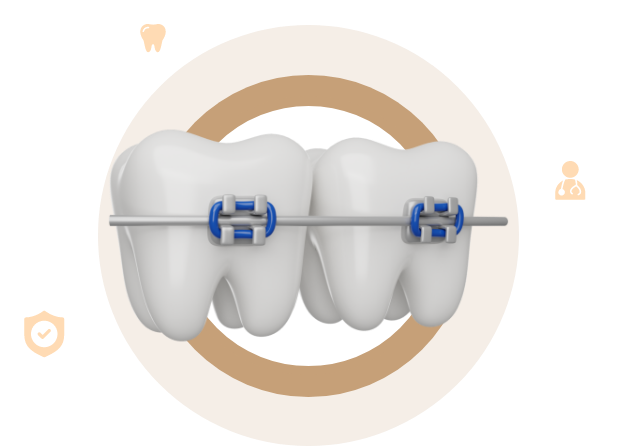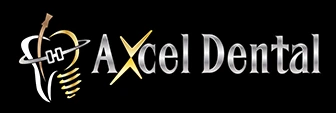
Early Orthodontic Treatment
- Created in Orthodontics
Early orthodontic treatment, also known as interceptive orthodontic treatment, is used to prevent future orthodontic issues. Between the ages of seven and 14, the teeth and jaw are still developing, making them more malleable for effective interceptive orthodontic treatment Sometimes patients as young as seven years old are able to begin orthodontic treatment, though their candidacy depends on specific conditions of their mouths.
Is your child a candidate for early orthodontic treatment?
To determine if your child is eligible for early orthodontic treatment, we recommend visiting the orthodontist at age seven. The earlier problems are caught, the better your child’s oral health will be in the future.
Your child must have at least one of the following conditions in order to be considered for early orthodontic treatment:
- Crowded teeth: When a child’s jaw is too small, the result is severe dental crowding, where some or all of their teeth
- Gapped teeth: Excessively spaced A gap in the upper front teeth is the most common type an orthodontist sees.
- Underbite: The lower front teeth overlap the upper teeth as a result of the lower jaw being pushed forward.
- Jaw irregularities: An unusual jaw size or narrow dental
- Crossbites: When the jaw shifts to one
- Thumb or pacifier sucking:Long-term thumb or pacifier sucking has affected the teeth or jaw
- Mouth breathing: If your child only breathes through their mouth, it can cause crooked teeth, facial deformities, or poor
- Extra or missing teeth:Orthodontic treatment will need to be adjusted For extra teeth, extractions may be necessary.
- Types of Early Orthodontic Treatment Palatal Expanders
When the jaw has formed abnormally and is not wide enough for permanent teeth to erupt, this device expands the jaw over time to create more space. A wider jaw allows your child to receive more effective and quicker orthodontic treatment, by means of clear aligners or traditional metal braces. This device is also useful for children with a narrow palate; it helps align the upper teeth and jaw. Other common conditions where a palatal expander may be needed include impacted teeth, crossbites, dental crowding, and breathing problems. Palatal expanders can only be used on younger children since their jaws are still developing.
- Traditional Braces
An orthodontist’s go-to for orthodontic treatment, traditional braces are commonly used in instances of misaligned teeth, crooked teeth,or other bite problems. While this equipment is reserved for patients between ten and 14, some children younger than ten might need traditional braces if they have severely overcrowded teeth, an underbite, gapped teeth, or missing teeth.
- Headgear
This device may be necessary if your child’s jaw is severely misaligned. It is used together with braces and is secured around the head and face with a neck strap.It’s important to note that braces are only capable of correcting teeth positioning.
Headgear encourages proper jaw growth. There are three common types of headgear:
- Cervical pull for overbites and underbites
- Reverse-pull for underbites and crossbites
- High pull for open bites
- Clear Aligners
Also known as invisible braces, clear aligners have steadily grown in popularity over the years because they are removable, hard to see, and comfortable to wear. While usually meant for adults, some younger children can use them if they still have baby teeth
Categories
What Our Customer Say's
Posted onTrustindex verifies that the original source of the review is Google. I Had my Tooth Implant here Recently. It was done by Dr Purna Shah. It was very smooth and Painless and i would recommend this place to anyone who is considering a good Dental Clinic.Posted onTrustindex verifies that the original source of the review is Google. My daughter had an amazing 1st time dental experience. The staff and Dr. Shah was very kind and welcoming to us both. Dr. Shah and Ms. Gina explained things very well and made us feel comfortable. My daughter is excited for her next appointment! Thank you also to the office secretary, she is very kind as well.Posted onTrustindex verifies that the original source of the review is Google. Very good experience with everyone there,all very pleasantPosted onTrustindex verifies that the original source of the review is Google. The staff are professional and caring. They work with you to get the most from your insurance. They are wonderfully accommodating. Recommend them for all your dental needs.Posted onTrustindex verifies that the original source of the review is Google. Dr Shah and her staff are all around excellent! The first time I came I had an insurance problem but they kept trying to help me and problem solve. This time I had to get a cleaning and filling. Gina, her assistant rocked and was so good at everything. Alyssa at the front desk is so friendly and helpful too. Overall great experience!Posted onTrustindex verifies that the original source of the review is Google. Honestly, been to many dentists in my almost 40 years. But speaking from a genuine place, I’ve never been so excited to have a crown put on post root canal. The lovely receptionist is always warm and friendly while the treatment and procedural staff is patient and explain everything in detail. 100% the best experience I’ve had.Posted onTrustindex verifies that the original source of the review is Google. Dr. Shah is excellent Dentist. Reasonable rates. Very Good Overall Customer Service.Posted onTrustindex verifies that the original source of the review is Google. It has been an amazing experience. Staff is very friendly and caring. They were able to give me same day appointment and fixed my problem of having a loose implant. Definitely recommended this place for dental needs.Posted onTrustindex verifies that the original source of the review is Google. Thee service was excellent ; you learned what the specifics with your teeth!

Hours of Operation
Monday
9:00 am - 5:00 pm
Tuesday
9:00 am - 5:00 pm
Wednesday
Closed
Thursday
9:00 am - 5:00 pm
Friday
9:00 am - 1:00 pm
Saturday
Closed
Sunday
Closed
Contact Us
We will response as soon as we receive your message

